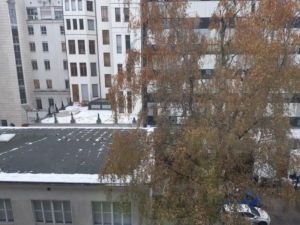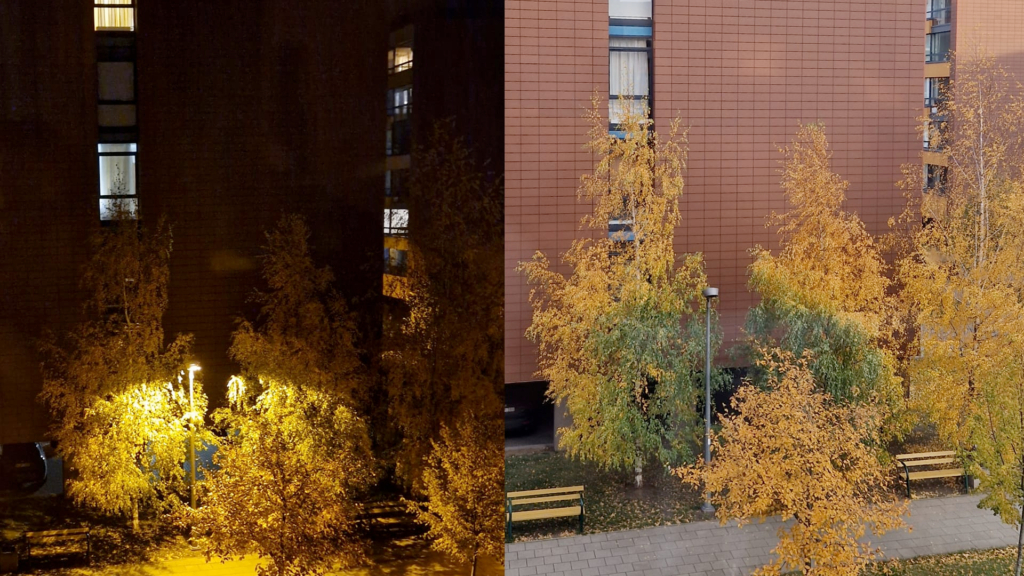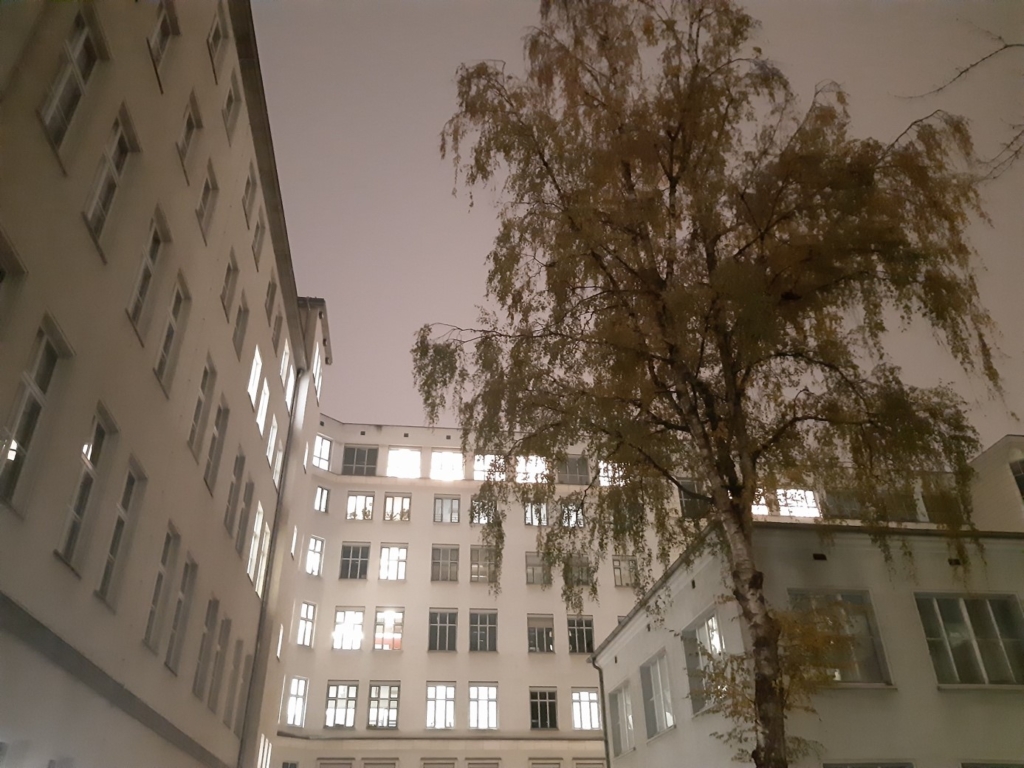It has been a hot September in Germany and a very warm October. The cold has come almost overnight just before Lin Meng from Vanderbilt University in Nashville, TN visits our research group at Humboldt-University during her research stay in Berlin and Munich, Germany. The birch tree in front of our office windows still has its yellow leaves while Lin introduces us to her ecological research on tree phenology, that is, the study of seasonal events in biological life cycles. Her key interest is in how plants respond to anthropogenic climate change, urbanization, and water scarcity.

Autumn birch tree in the snow.
Waves matter to urban trees
Urban waves matter a lot in Lin’s research. “The timing of leafing out is a very fine balance in timing between wanting to produce energy and avoiding harm,” explains Lin. Not only water availability, but also sun radiation and light exposure give trees cues when it is a good time to develop leaves and blooms in spring and when to let the leaves go dry and fall in autumn.
Lin has found that urban trees that are affected by urban heat islands leaf out six days earlier in spring than trees that ‘wake up’ in the countryside (see her PNAS paper Meng et al. 2020). In most U.S. cities, heat islands make a difference of 1 degree Celsius. Artificial light is another factor that impacts on tree phenology. As trees respond to the duration of daylight, they lose their leaves later if they stand illuminated after dark and they might also fall later into winter dormancy. In this state they become rather insensitive to their environment, including temperature changes. Irritations through artificial light exposure might thus make trees more vulnerable to a sudden onset of winter as we have just experienced it in Berlin.
To monitor and model these events, Lin and her group use and compare remote sensing data, Earth system models and field measurements. They look at how trees in urban and rural areas behave differently. One of the challenges of this investigation is to disentangle the effects of temperature versus light, both of which change in similar way. Typically, in the North/high-latitude, short days come with cool temperatures, and in the South/low-latitude, long days with heat. They have used the unique topography of Alps Region as a natural laboratory that allows them to disentangle the correlation of temperature and the duration of daylight. In the northern Alps, temperature remains stable, because the mountain peak is at the low latitude and mountain foot is at the high latitude, cancelling out the temperature gradients across latitude or elevation. But daylength still change across latitudes. Therefore, researchers can study the effects of daylight on tree phenology.
Do trees ‘learn’ to be affected?
We are fascinated by Lin’s research as it allows us to think beyond humans and how they are affected by urban waves. Ignacio observes that the disturbance of sleep or dormancy are critical themes in all our research areas. People who feel negatively affected by urban heat, environmental noise or electromagnetic waves in the form of wireless signals or visible light very often suffer from bad sleep and the negative health effects this entails. So, is it anthropomorphism to speak about sleeping trees? Our colleague Margherita who has just returned from field research in Japan and Japanese reminds us that the way in which we refer to trees as “they” or “them” in European language families make it even easier to subjectify trees as beings that deliberately fall into dormancy or live out when they ‘feel’ it’s time.
“Light is food for trees,” says Lin. “If there is more light, including artificial light at night, they can produce more energy through photosynthesis and they have an increased biomass, but they also rest less.” But she also reminds us that what appears as tree agency is in fact a very complex process that involves ecosystem signals and plant environmental sensing – in autumn even more so than in spring as “autumn phenology is more complicated than spring phenology,” says Lin. Besides, is an increased biomass automatically bad for trees? Does a diagnosis like ‘obesity’ make sense for trees or do they profit from their increased biomass? In our conversation, Lin offers us a differentiated picture: Trees profit, but also become more vulnerable to extreme events such as summer droughts or spring frost.

This widely shared photograph (see reddit and youtube) shows how leaves remain green under a light source.
Trees as a tool to think and also plan with
Maybe we could practice some ‘arbomorphism’ and ask how humans are affected like trees in a seasonal as well as diurnal rhythm. Lin tells us that an introductory exercise in phenology is to encourage people to close their eye and “imagine you were a tree, you don’t have a watch…” After all, waves also give humans important environmental clues. We might have unlearned it to consciously respond to natural waves. Artificial sources of heat and light have freed humans from the natural rhythm of sun radiation. Modern science has produced laboratory settings to measure the duration and quality of sleep irrespective of the day-and-night rhythm of real-world environments (see Hannah Ahlheim’s Mosse Lecture at Humboldt University on 30 Nov. 2023). Yet, the hormonal and nervous systems of living species, including humans and trees, have evolved in and with wavy environments and won’t stop being susceptible to the heat, sound and electromagnetic signals they produce.

Birch tree in front of our office window under the artificially illuminated Berlin sky.
Trees as a tool to think and also plan with
Maybe we could practice some ‘arbomorphism’ and ask how humans are affected like trees in a seasonal as well as diurnal rhythm. Lin tells us that an introductory exercise in phenology is to encourage people to close their eye and “imagine you were a tree, you don’t have a watch…” After all, waves also give humans important environmental clues. We might have unlearned it to consciously respond to natural waves. Artificial sources of heat and light have freed humans from the natural rhythm of sun radiation. Modern science has produced laboratory settings to measure the duration and quality of sleep irrespective of the day-and-night rhythm of real-world environments (see Hannah Ahlheim’s Mosse Lecture at Humboldt University on 30 Nov. 2023). Yet, the hormonal and nervous systems of living species, including humans and trees, have evolved in and with wavy environments and won’t stop being susceptible to the heat, sound and electromagnetic signals they produce.